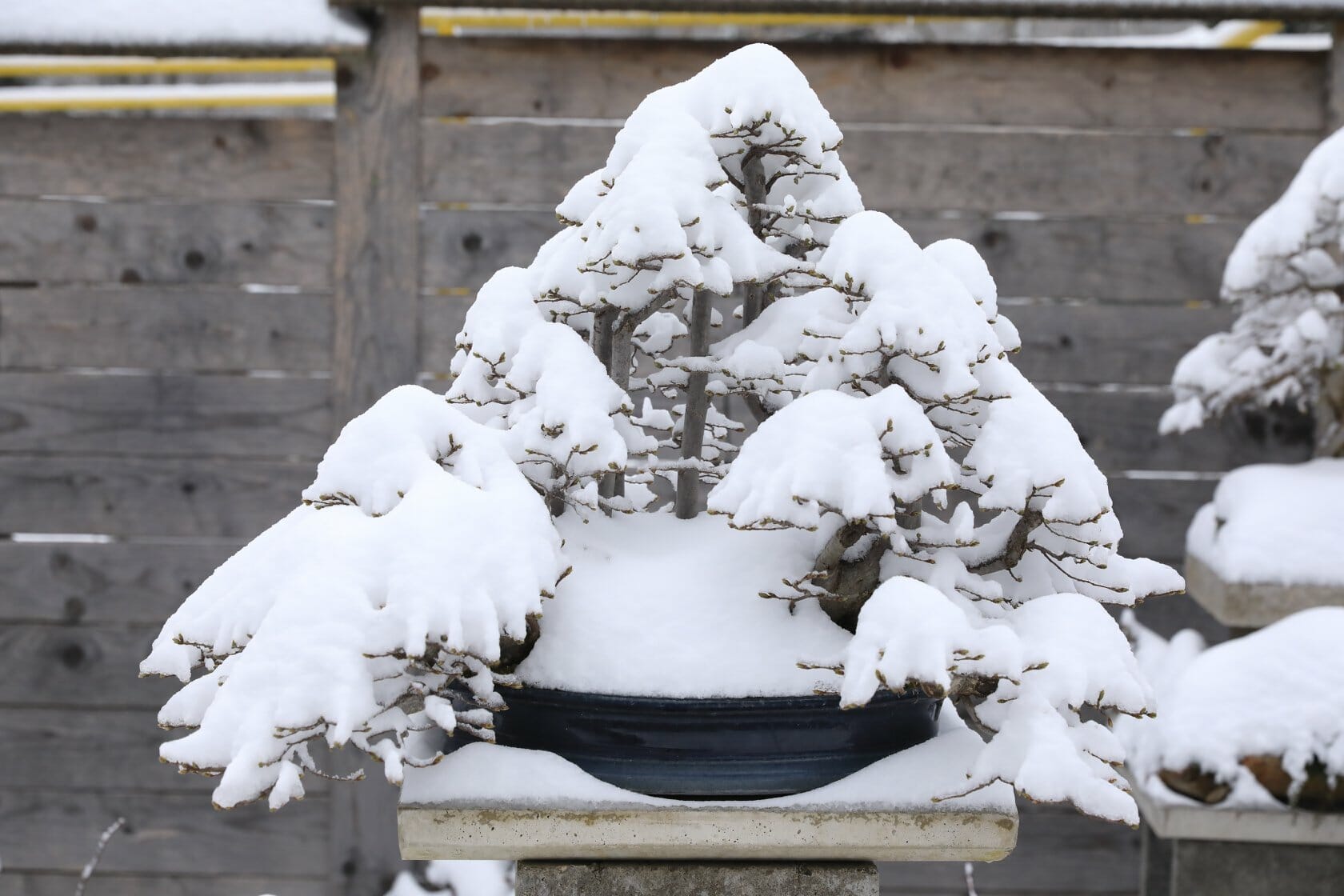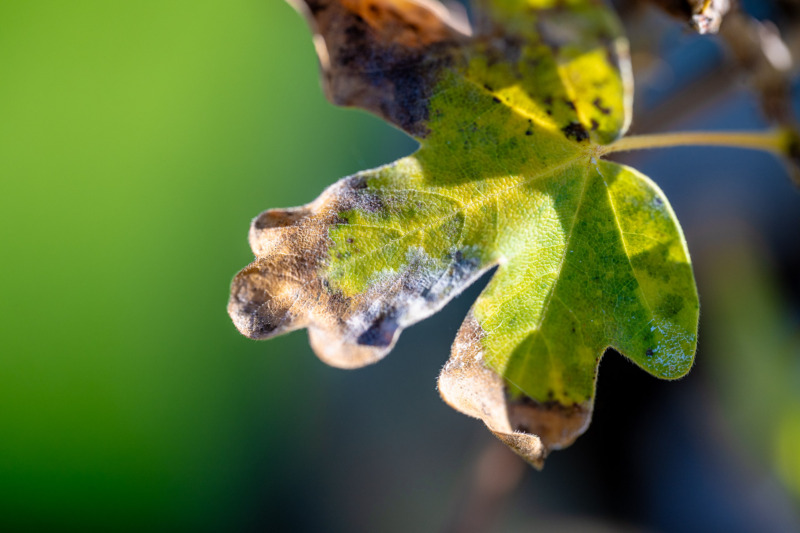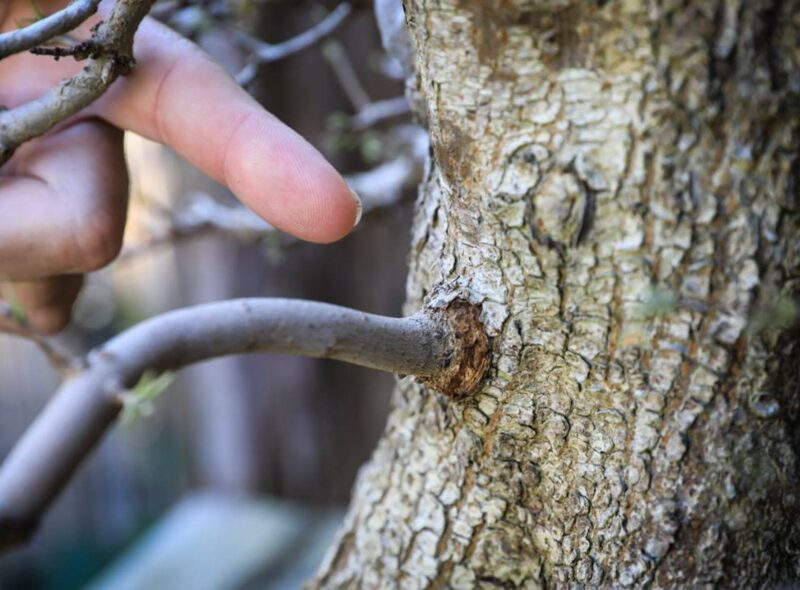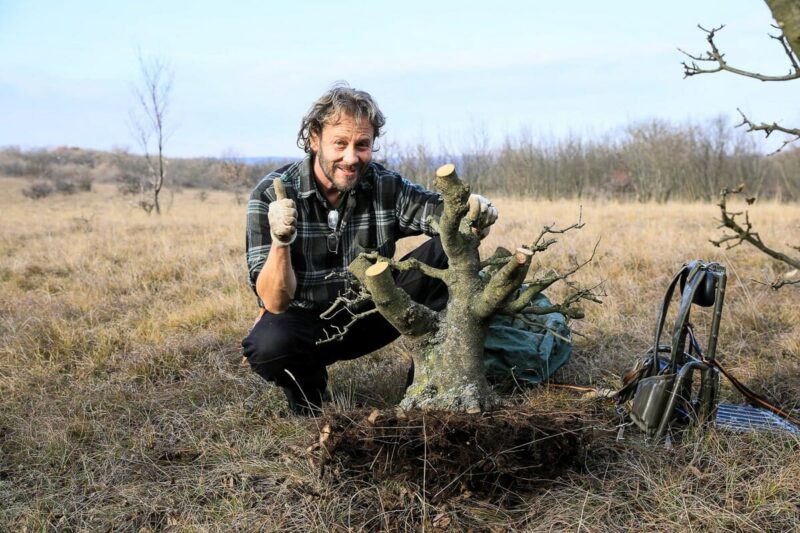Categories
Tags

During the subsequent dormancy period, the storage substances are mainly in the form of starch (carbohydrates). If temperatures fall below -5°C to -10°C as winter sets in, enzymes convert starch into sugar. The bonsai begins to release water from the cells and store sugar. The increased sugar concentration prevents the cells from freezing. The tree becomes frost-proof. The formation of buds is also a sign of winter preparation; at the same time, the tree stores nutrients in the buds and terminal buds to facilitate new shoots in the following year.
A distinction is made between tropical and subtropical bonsai. Subtropical bonsai should be kept cold (frost-proof) at +5°C-maximum +15°C over winter. It does not matter whether the room is bright or not. Tropical bonsai need warmth and light in winter. Temperatures from +20°C to +25°C, do not place over a heater. Light up to 100 lux minimum, always choose a window seat. Tropical plants need 12 hours of light.
Elm trees often have the problem of the spider mite. To prevent this pest and avoid having to use chemicals, you can make a homemade cold extract from onion skins, for example. Most onion plants contain the active ingredient ALLIZCIN . Soak the onion skins in cold water overnight and apply the brown liquid undiluted, twice a month as a prophylactic. If the spider mite is already active, only a chemical agent (Vertmec or Metasystox R/5) will help. Bonsai that have been outdoors during the warm season are treated with the same agent as outdoors before overwintering.
In the fall, after the leaves have fallen on the deciduous trees, branches that are not needed are cut away, especially thick branches. As the sap flow is no longer so active, the risk of bleeding is no longer so great. Especially with conifers such as pines or spruces, the sap flow is not so strong in the cold season. In deciduous trees, the fine branches that have grown over the summer are only cut back in spring when the buds begin to swell. This is because the tree has stored nutrients in the buds and terminal buds. If you prune in the fall, it costs the tree the strength it needs to sprout. Indoor bonsai, subtropical bonsai should not be pruned in winter anyway, as the tree will always try to sprout again if it is not cold enough and it takes a lot of energy. Tropical bonsai that have sufficient light in winter (additional lighting), as can be seen from the spacing of the leaves (indenodes), can always be pruned when the branches outgrow their shape. However, as there is usually too little light available, the bonsai is left to grow over the winter and not pruned until spring.

Category
Editor

Category
Editor

Category
Editor